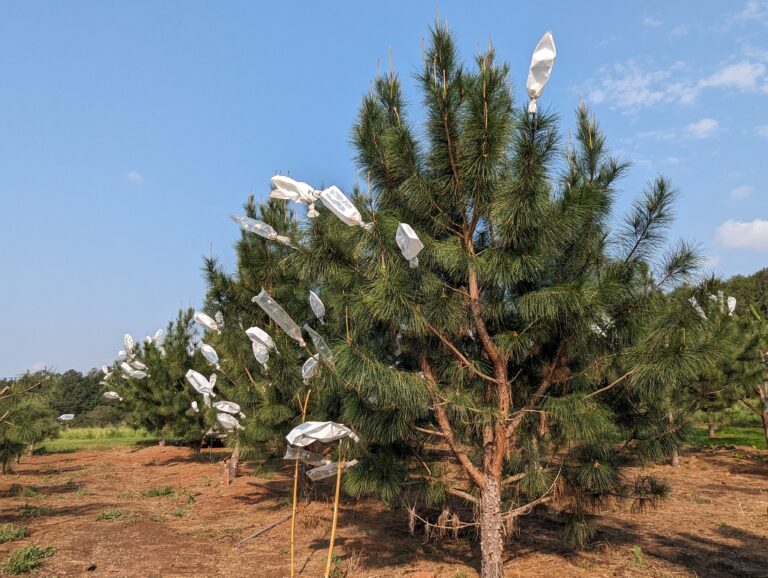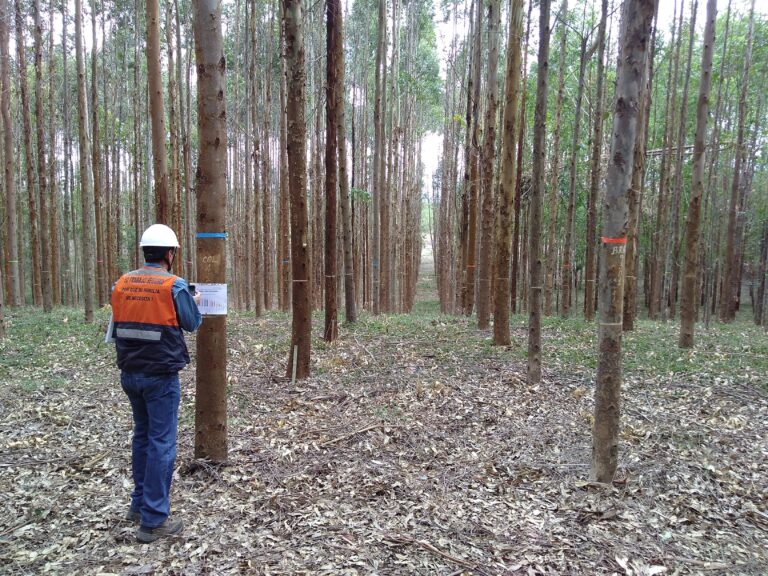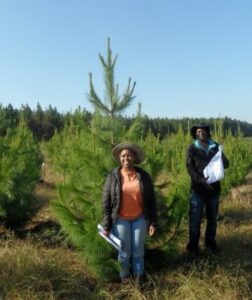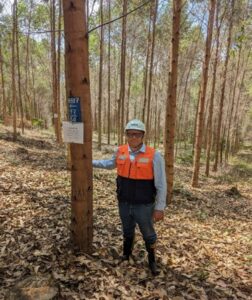Camcore History
In the late 1970s, Bruce Zobel (NCSU), Carl Gallegos (International Paper), Willy Mittak (FAO), and Jesse Perry (Rockefeller Foundation) envisioned an international organization dedicated to conserving tropical and subtropical trees in Mexico and Central America. Their expertise in forest taxonomy, industry partnerships, and research laid the foundation for what would become Camcore.
Founded in 1980 as part of NC State University’s Department of Forestry & Environmental Resources, Camcore (Central America and Mexico Coniferous Resources Cooperative) was driven by the private forest sector. It demonstrated how industry, government, and academia can collaborate to advance tree breeding, genetic conservation, and environmental stewardship. Camcore also attracted support from foundations and grant agencies to expand its conservation mission.
Camcore collects seeds from threatened forests and establishes genetic field trials and conservation areas in protected environments worldwide. These trials (progeny tests) help determine the best-performing trees for sustainable forestry. Camcore researchers at NCSU analyze trial data, providing members with annual recommendations.
In 1980, Camcore’s five founding members included:
- Smurfit Kappa Cartón de Colombia
- Aracruz Florestal (Brazil)
- International Paper Company (USA)
- Weyerhaeuser Company (USA)
National Seed Bank of Guatemala
Today, Camcore has 38 members across four continents, working with over 50 forest species and maintaining a global network of 2,500 hectares of genetic trials and conservation areas. Its work has expanded significantly since the early years, moving beyond pine species to include Eucalyptus, wood quality research, and advanced breeding technologies.
Global Expansion
1994: Expanded seed collections to Southeast Asia
2003: Added southern USA species and launched the U.S. Domestic Gene Conservation Program
2010: Began work in Australia
2016: Expanded E. grandis gene pool through member donations in South Africa and Colombia
2018–2022: Assessed lesser-known Eucalyptus species for tolerance to extreme climates and soils
2020: Launched eucalypt hybrid testing
2024: Began research on site-species matching using machine learning tools
Camcore has sampled over 11,000 trees across 500 locations, creating the world’s largest database on tropical and subtropical pines and non-Australian Eucalyptus species. Its research continues to drive sustainable forestry, biodiversity conservation, and climate resilience worldwide.
Tree Improvement
Camcore enhances the adaptability, growth, and resilience of pines, eucalypts, teak, and gmelina through advanced breeding. By selecting top-performing species, provenances, and families, we improve disease resistance, wood quality, and environmental tolerance. The best provenances grow 10–30% faster, with top families achieving up to 25% greater growth, ensuring superior next-generation trees for sustainable forestry.


Genetic Tests
Camcore operates one of the world’s largest genetic testing programs, conserving and improving forest species through controlled trials across diverse environments. Seeds from our conservation collections are processed at NC State University and distributed to members, with trials assessed at 1, 3, 5, and 8 years to evaluate adaptability, growth, and resilience.
With 2,500+ field trials covering 50+ tree species, our research supports species-site matching, growth projections, and environmental impact assessments, ensuring sustainable forestry worldwide.
Hybrids
Tree breeding aims to combine the best traits of different species to create hybrids with superior adaptability, growth, disease resistance, rooting ability, and wood quality. Each species has its unique advantages, but by strategically crossing them, breeders can develop trees that are stronger, healthier, and more productive in a variety of environments.

Pine
Camcore’s Pine Hybrid Project, launched in 2001, develops high-performing hybrids for commercial forestry. With 23 verified hybrids and 82 trials across eight countries, top performers like P. patula × P. tecunumanii (LE) show strong commercial potential. Ongoing breeding programs refine selection, driving genetic advancements in sustainable forestry.

Eucalyptus
In 2011, Camcore launched a cooperative hybrid breeding project to enhance commercial forestry. By combining Eucalyptus urophylla genetics with member contributions, the initiative developed and tested hybrids for adaptability, growth, and resilience. Between 2011 and 2015, key crosses—including E. grandis × E. pellita and E. urophylla × E. brassiana—were produced and distributed. This collaboration drives innovation in sustainable forestry, with Camcore now advancing to the next phase of hybrid research.









